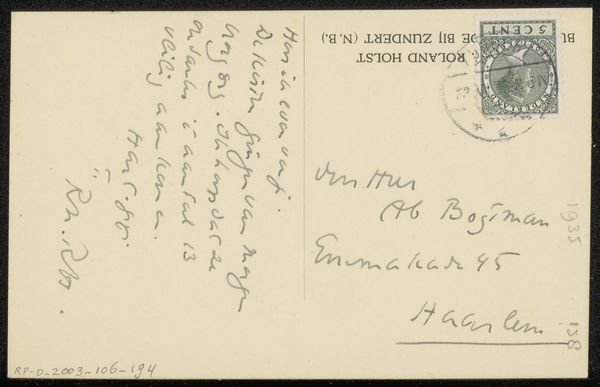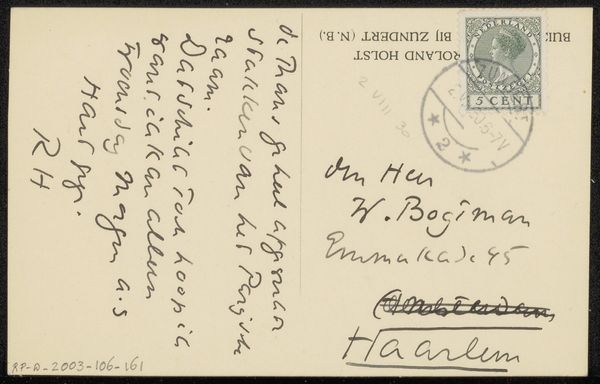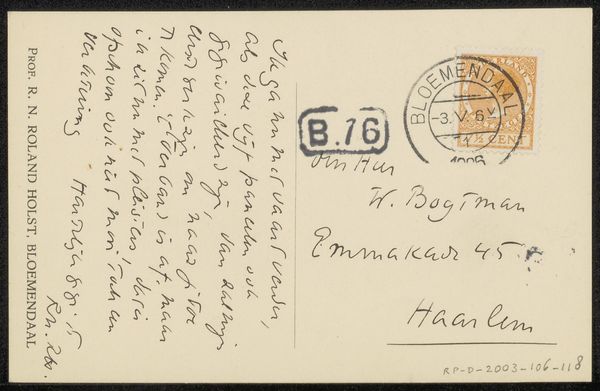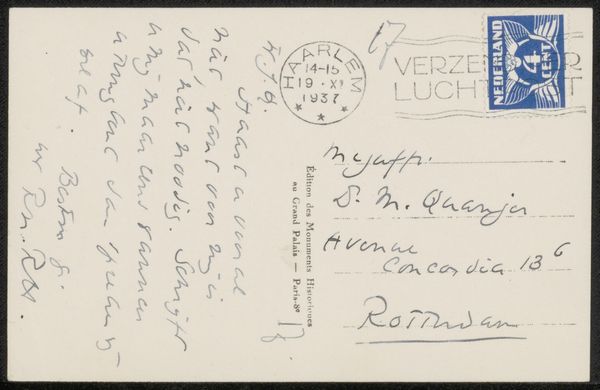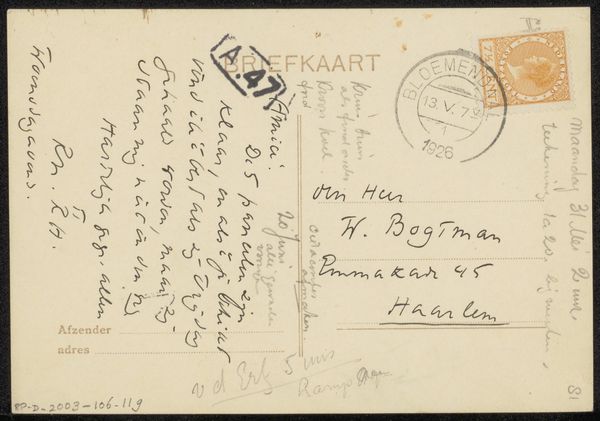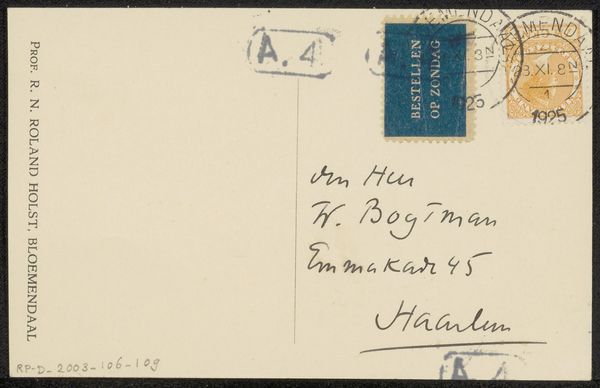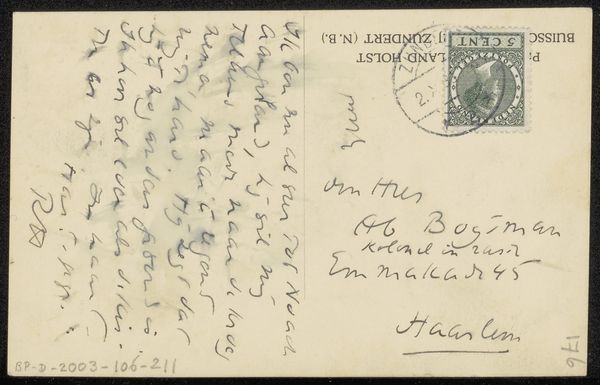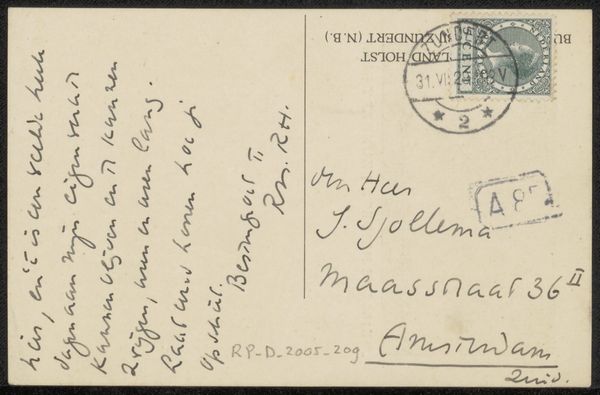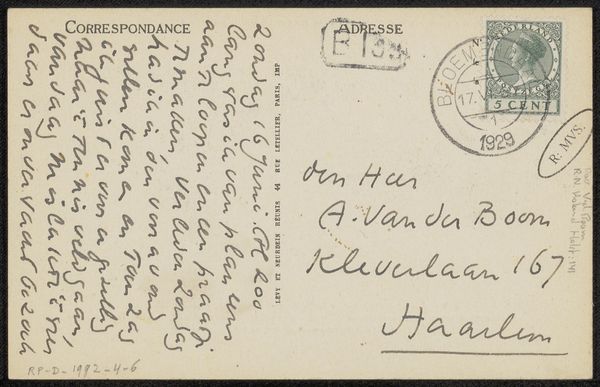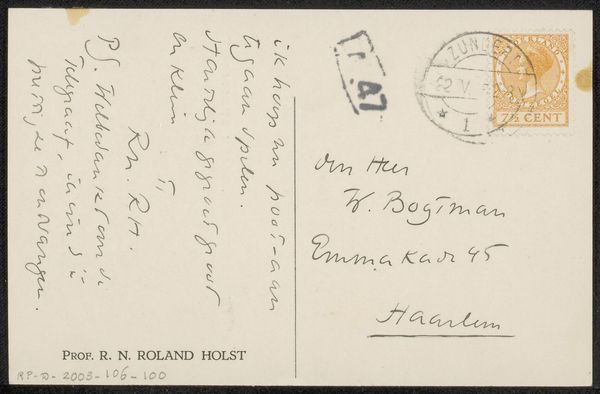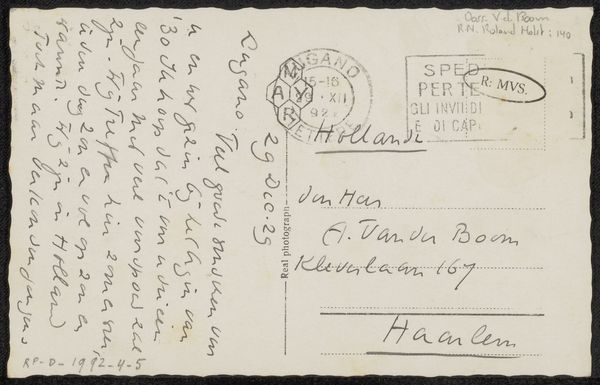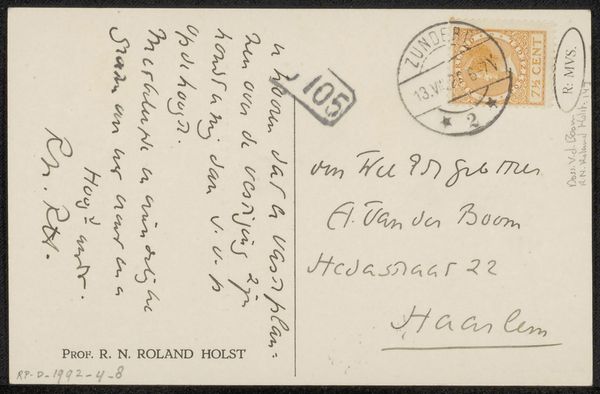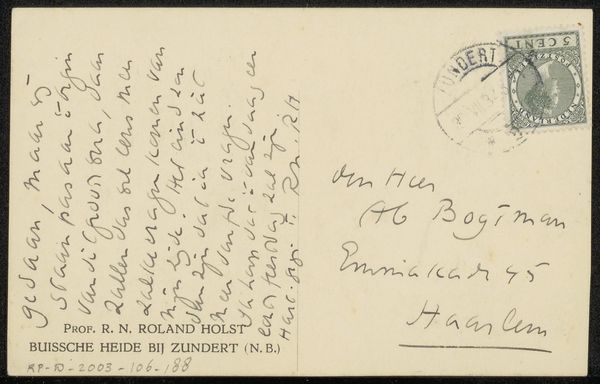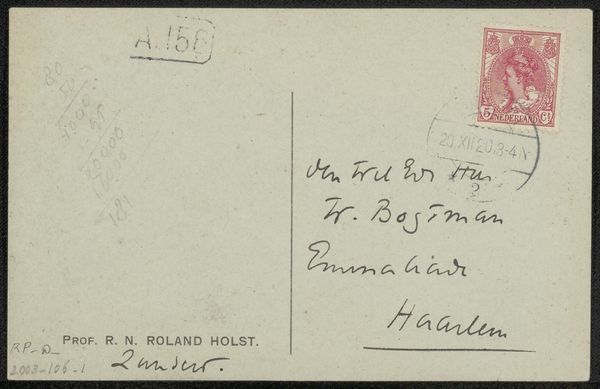
drawing, graphic-art, paper, pen
#
drawing
#
graphic-art
#
pen drawing
#
pen sketch
#
hand drawn type
#
paper
#
pen
#
calligraphy
Copyright: Rijks Museum: Open Domain
Curator: Let's take a closer look at this “Briefkaart aan Willem Bogtman,” a postcard to Willem Bogtman. It's believed to have been created around 1935 by Richard Nicolaüs Roland Holst. The piece is rendered in pen and ink on paper, showcasing the artist’s calligraphic skill. Editor: It strikes me immediately as incredibly intimate. The script feels rushed, almost anxious, and that simple stamp evokes the weighty systems of postal service alongside the artist’s personal message. Curator: Holst was deeply engaged with social and political movements of his time, so while appearing quotidian, postcards held significance as a form of accessible communication across social strata. Its existence invites considering how such informal missives contributed to building artistic and political solidarities. Editor: Exactly. The handwritten element screams personality, offering a direct connection to the artist. Note the rhythm of the writing; it almost creates an abstract pattern. It subverts traditional modes of viewing art that we typically experience within museums. Curator: We can delve further into the socio-political meaning within. Considering Holst's active involvement with socialist circles, such messages could have acted as small instruments towards greater mobilization, using basic materials in pursuit of collectivity. Editor: Also, the materiality itself – simple pen on paper – speaks volumes about the artwork’s availability. What does this ease of production imply about Roland Holst’s beliefs regarding art and accessibility? Did the simplicity encourage more conversation in a politically tense time? Curator: Perhaps. Reflecting on Holst’s choices of communicating through an unassuming postcard unveils the complex matrix of personal and societal exchange—democratizing the creation and dissemination of thought through paper and pen. Editor: Yes, analyzing this small artifact expands outward into larger inquiries of class and dialogue at an interesting point in European history. It's an example of an artwork, made for direct interpersonal engagement, which has come to have significant importance, historically and personally.
Comments
No comments
Be the first to comment and join the conversation on the ultimate creative platform.
